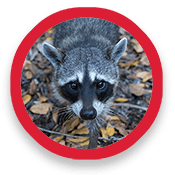SCIENCE EXPERIMENTS FOR KIDS
LOOKING FOR ANIMAL TRACKS
You’ll be happy to let your kids play in the mud with this nature project
There’s nothing fun about muddy footprints or paw prints on your living room rug, but finding them outside in nature can be an exciting and educational exercise for your kids.
In this outdoor activity, your little explorers will go for a hike and observe animal tracks to help them learn about the creatures living in your local parks. Winter is a magical time for hiking! You may get a little soggy, but there is so much to learn out on the trail. Just make sure they wipe their feet before they come inside.
GATHER THIS:
- Hiking or rain boots, and weather appropriate layers
- Optional: Local animal track guidebook, ruler, camera, pencil, notebook
THEN DO THIS:
- Go to your favorite trail on a day after a good rain (or go on a rainy day).
- While hiking, enjoy the sounds of nature around you, and keep your eyes on the trail ahead for muddy tracks!
- If you find a print on the ground, observe it. If you have a ruler, measure the track. You can also take a photo of the track with the ruler showing the size of the track.
- If you brought a pencil and notebook, draw the track and write down your observations including measurements, how many pads you count, and if claws are present. (Claws look like little dots above the toe pads.)
- Follow the tracks until the tracks disappear or get distorted along the trail.
ASK THIS:
- Where might the animal have been going?
- Is there food in the park to sustain this animal?
- Do you see signs like gopher holes, berry bushes, or signs of insects?
- Are dogs allowed in the park? Dog and coyote tracks both look pretty similar.
- Are the tracks a solo animal or a group of two or more?
- Why did the track trail suddenly stop?
- Are there any other signs of the animal on the trail besides the tracks? What are these signs?
WHAT IS HAPPENING?
Often animals walk on trails just like people do, because they are a quick way from one spot to another without bushes or other obstacles in the way. Animals are all around us, even if we are in or near big cities. Looking for animal tracks is a fun way to find out what animals live near you. Animals have distinctive tracks and as soon as you learn some of them they become easier to spot, giving you a better understanding of the wildlife ecology around you.
WHAT THIS TEACHES:
Skills: Recognizing signs of animals, observation, pattern recognition
Themes: Animal awareness, outdoor exploration
BONUS:
If you took pictures of the tracks you found, you can upload them to iNaturalist for help with track identification and add to their science database!
Join the CuriOdyssey Community
LOCATION
1651 Coyote Point Drive
San Mateo, CA 94401
Ohlone Land Acknowledgement
650-342-7755
[email protected]
CuriOdyssey is a 501(c)(3) nonprofit, Tax ID 94-1262434




